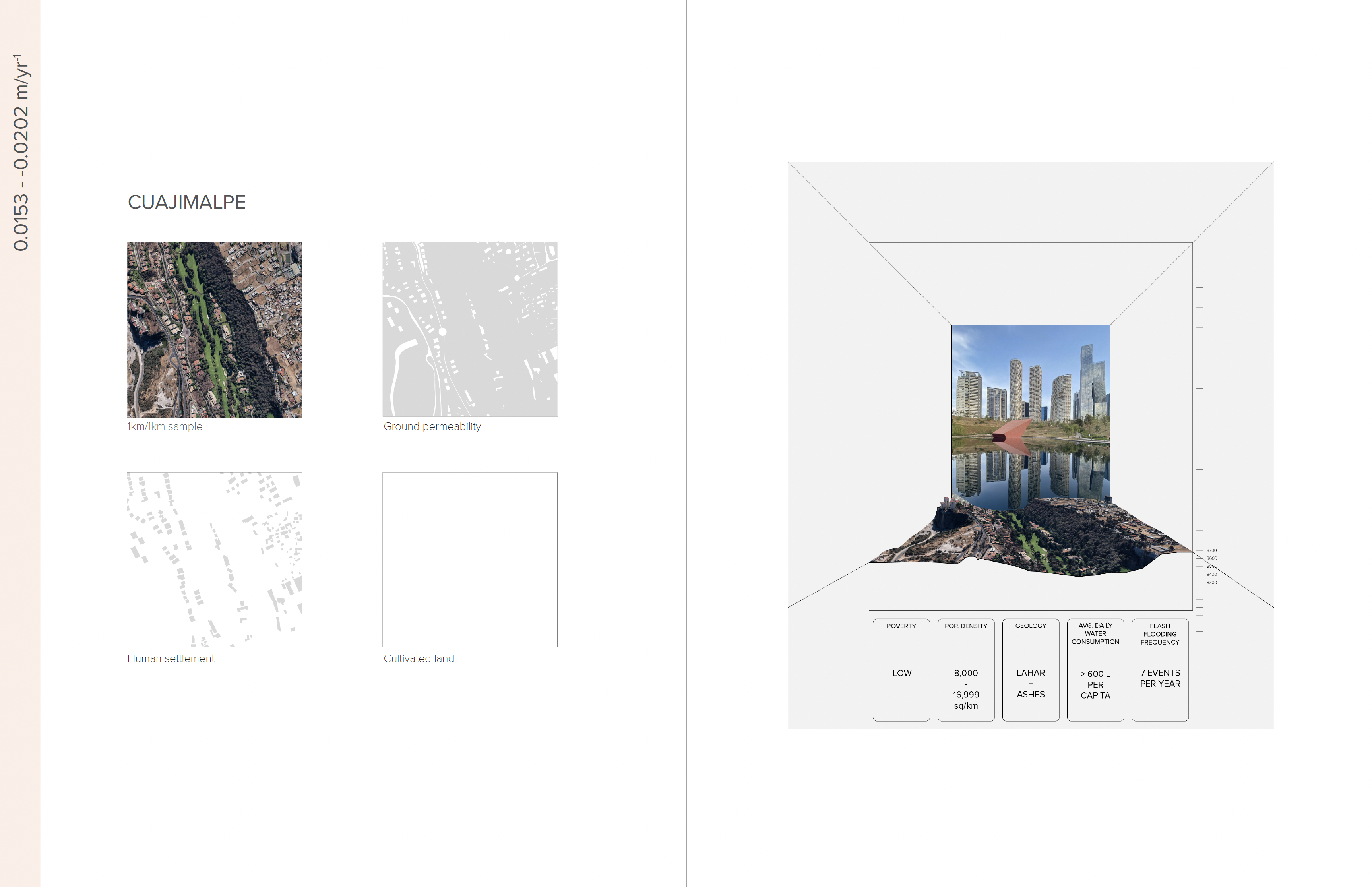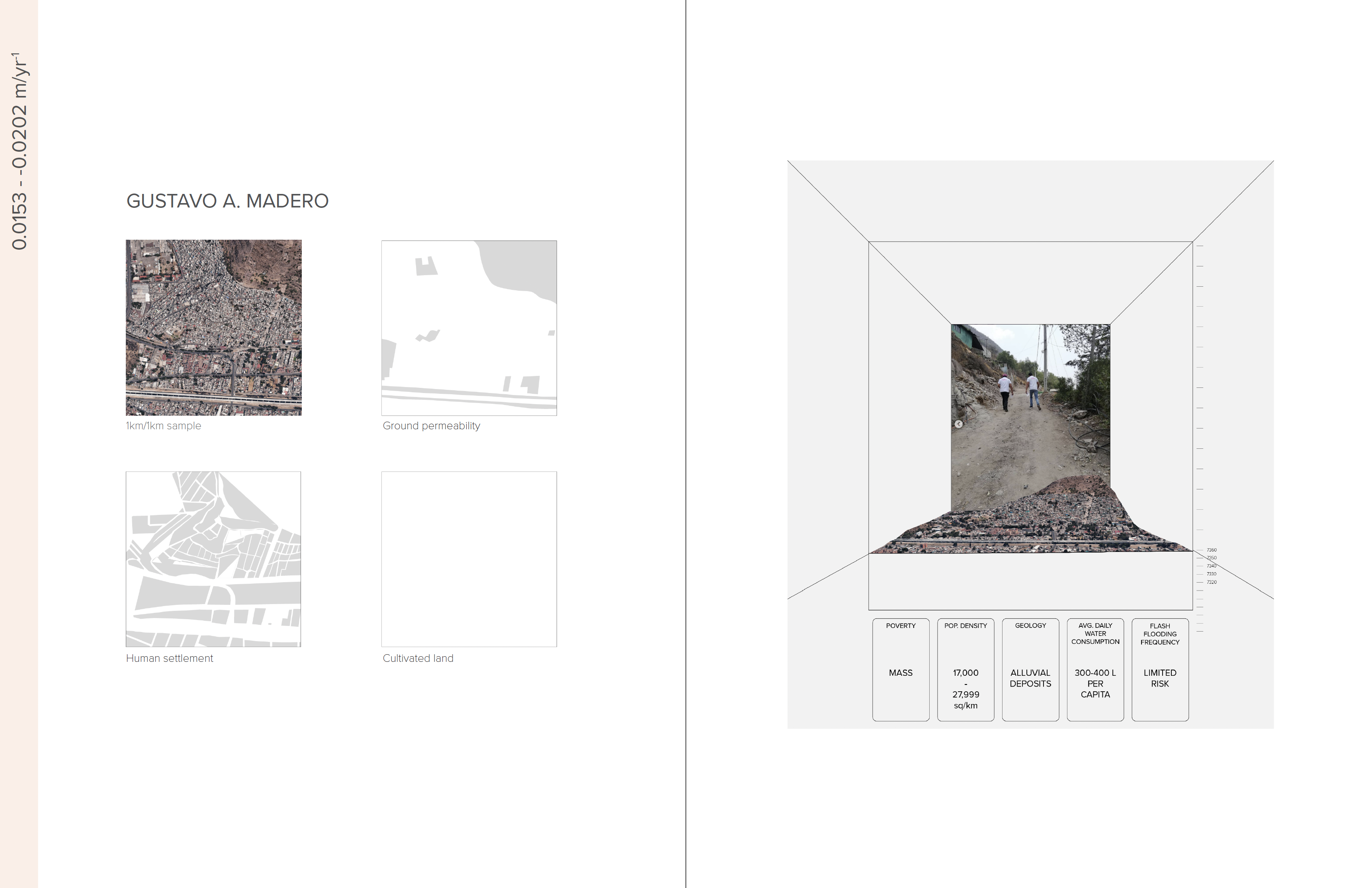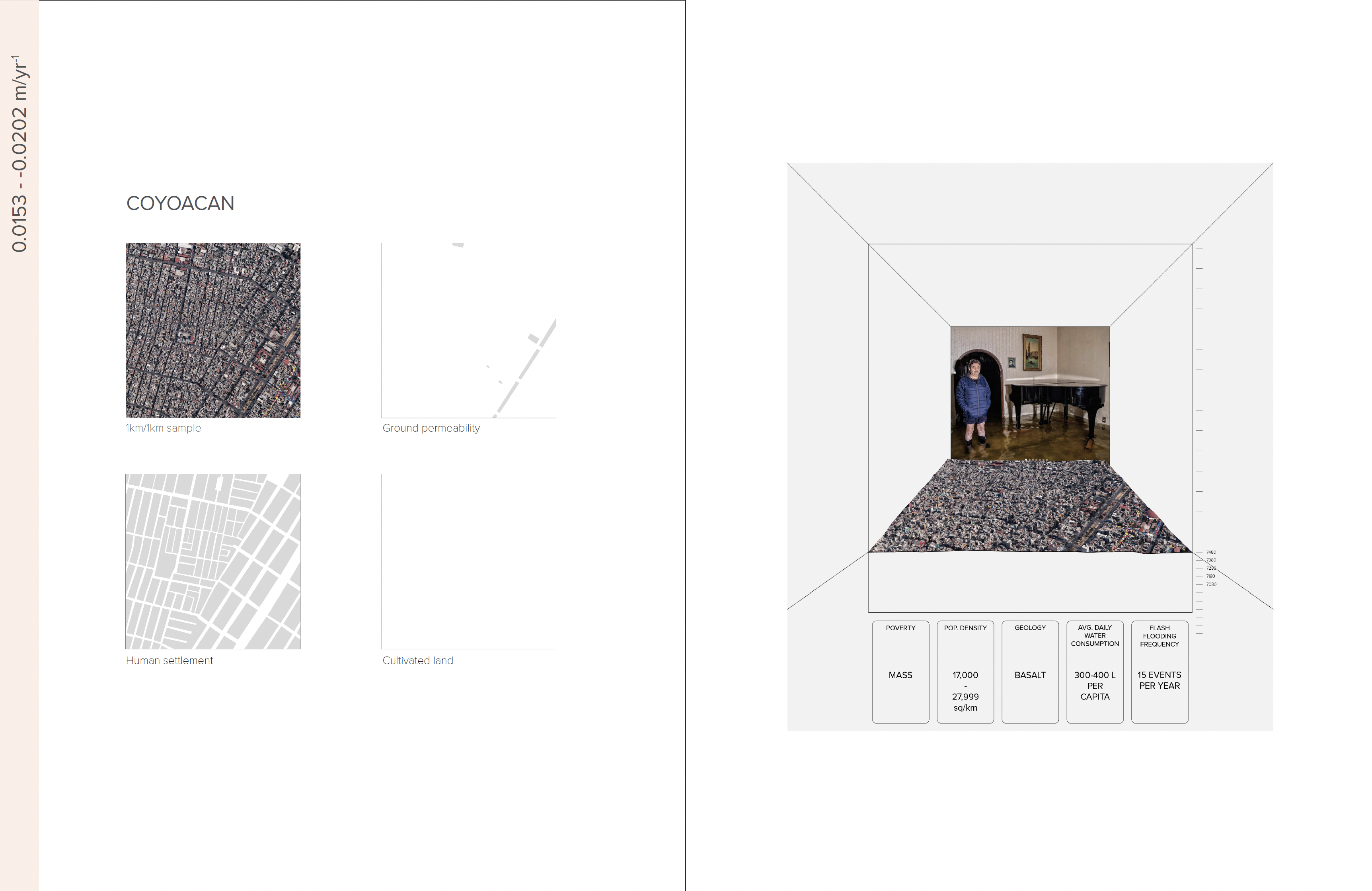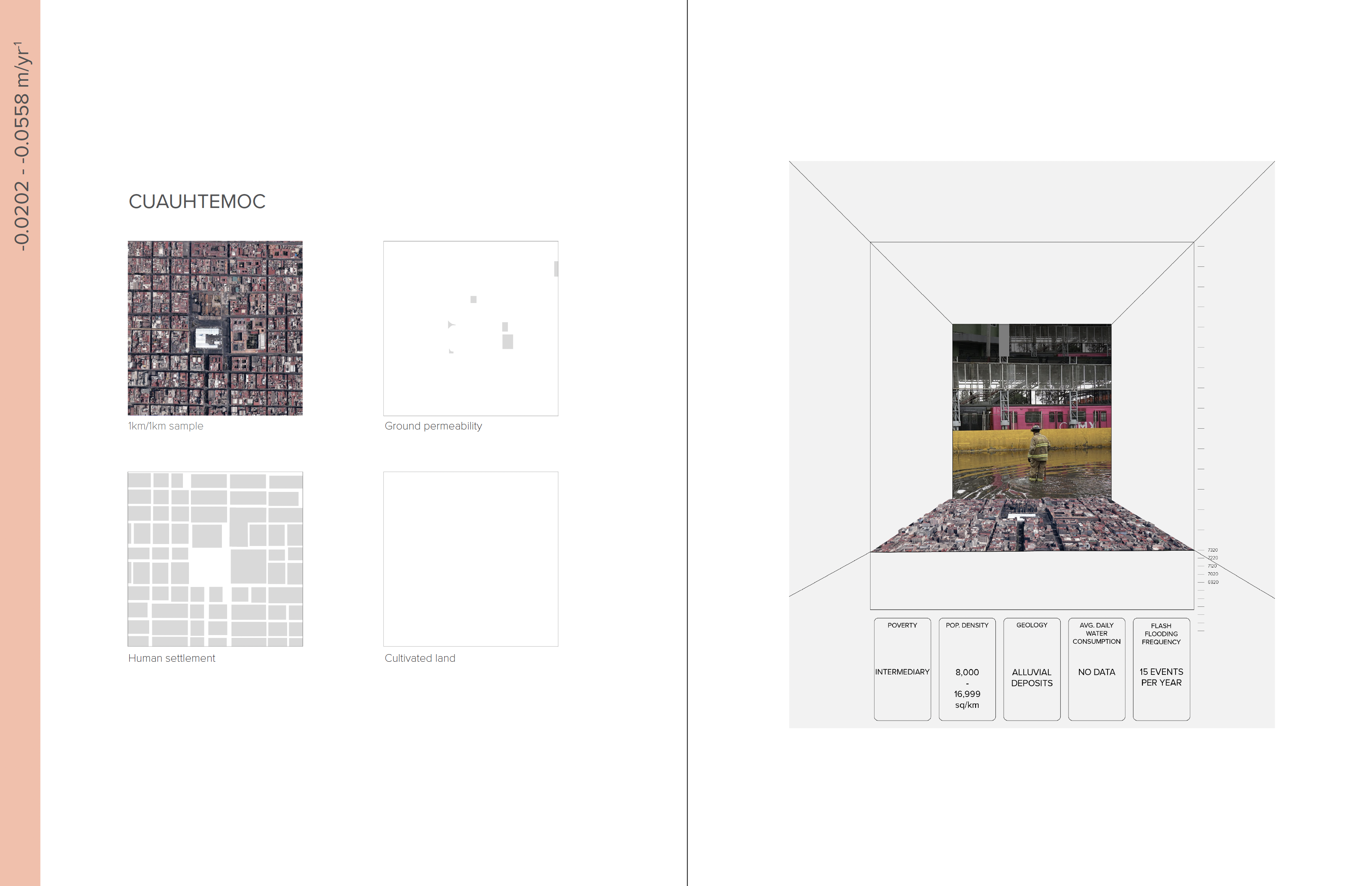Lake’s Revenge: Land Subsidence in Mexico City
Retrospecta 44
Retrospecta 44
Mexico City, supporting a population of over 20 million residents, faces a great water paradox – cyclical flooding and water shortages. Roughly 20% of city residents cannot rely on receiving water from their taps each day and are compelled into other methods of sourcing water – such as delivery by truck or tube well pumps. Current groundwater extraction patterns result in significant land subsidence: a city over a mile and a half above sea level is sinking and collapsing. What hydrological infrastructure was key to the development and expansion of the city? What is the role of this infrastructure in the city’s contemporary water crisis? Through the layering of ecology, ground permeability, population density, water accessibility, land subsidence and socio-economic status, are there specific patterns or trends across regions of the city?








In order to reveal patterns pertaining to Mexico City’s contemporary water crisis, a layered analysis of eight 1km by 1km samples of land subsidence varying from “hot” to “cool” are examined. Images from social media are layered on top of these samples, providing a bottom-up, ethnographic lens from which to challenge and reflect upon the subjectivity inherent in the origins of satellite imagery and demographic data. This collection of samples of various degrees of land subsidence comprise a patchwork ethnography, providing fragmentary glimpses into the cyclical crises of drought, flooding and sinking in Mexico City.